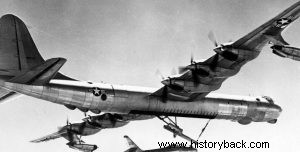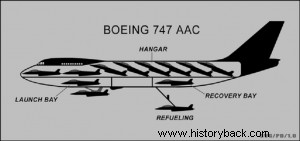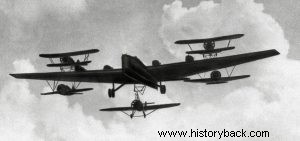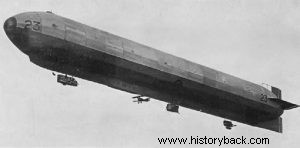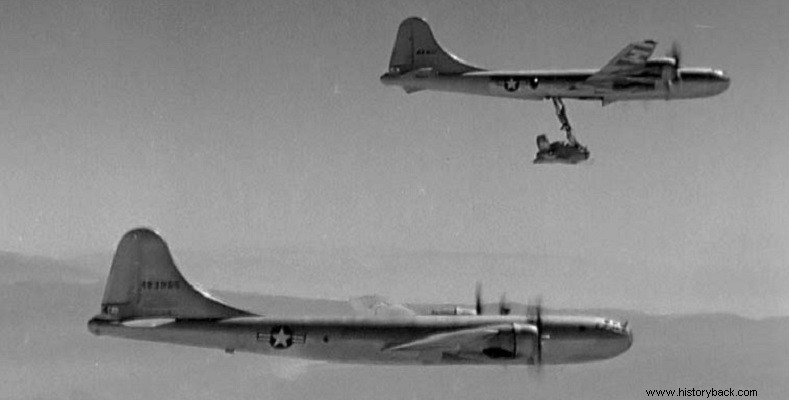
The idea of an aerial flying "aircraft carrier" was born almost simultaneously with the birth of the airplane. In the decades of the 1920s and 1930s, in fact, the idea took on flesh and blood, in the form of flying aircraft carriers, which served parasitic fighters, for their self-protection.
The idea continued to preoccupy designers for decades to come, with the Soviets building working prototypes of flying aircraft carriers. They were essentially heavy bombers, modified to be able to carry on their upper and lower wings fighter aircraft. After World War II the idea continued to preoccupy the Americans, who built the first purpose-built stealth jet fighter, the McDonnell XF-85 Goblin.
However, this program was terminated in 1949, since there was no longer any reason to build a flying aircraft carrier, as aerial refueling began to be implemented, gradually. Nevertheless, in 1973, the Boeing company brought the design back to the fore.
The US Air Force, in the 1970s, was looking for a "flexible air system, with global reach and supersonic performance, which would be capable, within 24 hours, of striking targets around the globe".
Based on these specifications, Boeing proposed the use of their huge passenger, the famous Boeing 747 Jumbo Jet, suitably modified to carry some new "micro-fighters", together with the fuel and ammunition necessary for their operational action.
The "mini-fighters" had to be really small, tiny. By way of comparison, an F-16 with a full combat load weighs about 18t. The miniature fighters that would be carried should not weigh more than 4.5t.
They would carry landing gear, but since they would not be required to perform a climb to reach operational altitude, they would carry a limited amount of fuel. Its permanent armament would be two 20mm cannons, while the wing pylons could carry bombs, rockets or missiles.
The interior of the 747 would be specially designed, with two compartments, one above, where the hangar of the fighters would be located, and one below, from where they would leave the mother ship and operate.
The 747 would carry 10 small fighters and a total crew of 42 men, including fighter pilots. Two small fighters could be launched simultaneously, from the mother ship. The launch time of all 10 was estimated at just 80 seconds.
The 747 would carry fuel and ammunition, capable of allowing three sorties per fighter.
The process of collecting the fighters was similar to that of aerial refueling, as the aircraft would be hooked to a special hook that the mother aircraft released, adapted to a air supply pipe. The whole process was estimated to take just 30 seconds.
The plan provided for the creation of a special air armada, with 10 Boeing 747s, each with 10 fighters and an AWACS early warning aircraft. In this way, 100 fighters could be deployed anywhere in the world in a short amount of time.
In theory the design was excellent and offered enormous potential. The American Air Force, however, was defeated, on the matter, by the American Navy and its supporters, who argued that since the real aircraft carriers existed, the flying ones were just a risky exaggeration.
Although the idea did not go ahead at the time, with today's technology, it would be more than feasible. Let's imagine a large aircraft, with a huge range, carrying, for example, some unmanned combat aerial vehicles (UCAVs)?
